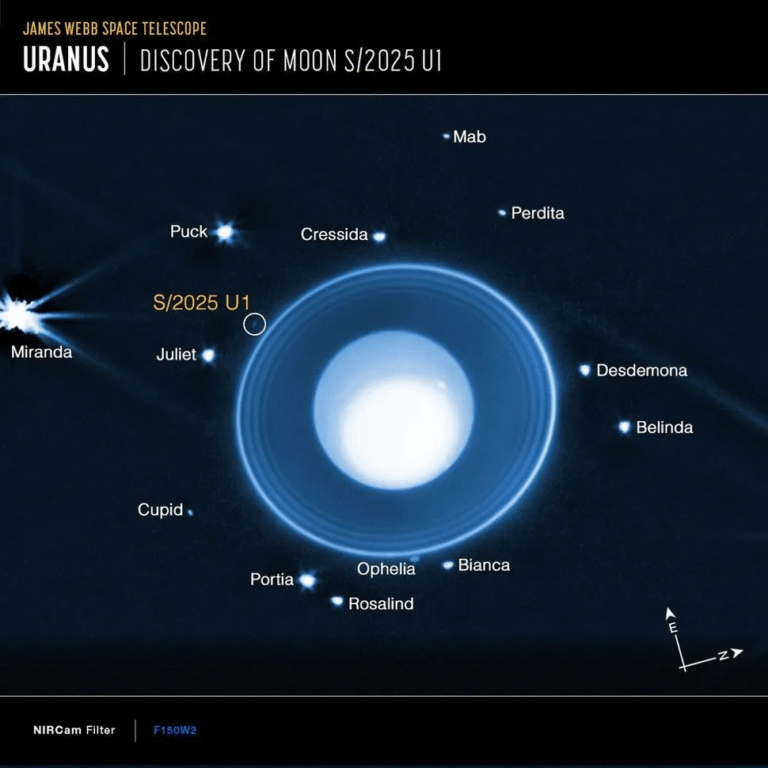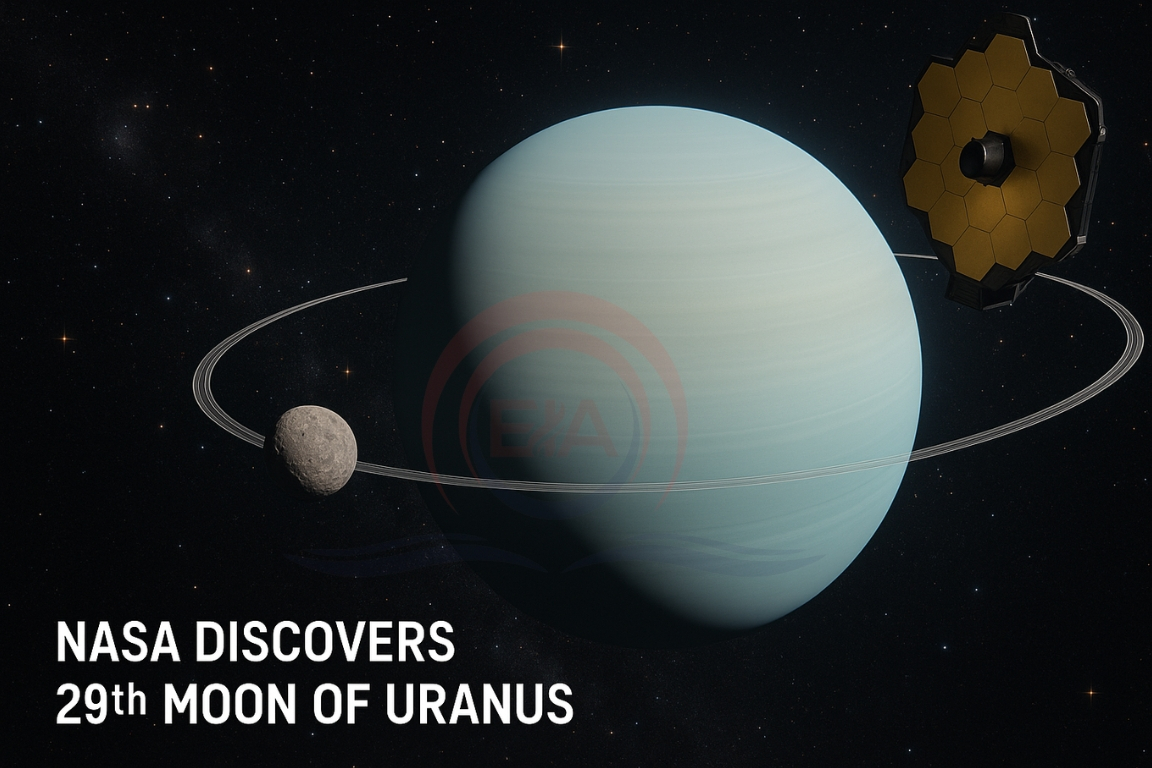NASA, using the James Webb Space Telescope (JWST), has detected a new natural satellite of Uranus. This 29th moon, temporarily named S/2025 U1, adds to the growing knowledge of Uranus’s system.
Key Features of S/2025 U1
- Size: Estimated diameter of only ~10 km, making it one of the smallest moons in the system.
- Orbit: Circles Uranus at a distance of around 56,000 km.
- Naming: The International Astronomical Union (IAU) will assign its permanent name later.

Uranus – Quick Facts
- Position in Solar System: Seventh planet from the Sun; third-largest in size.
- Discovery: Identified as a planet in 1781 by Sir William Herschel, previously mistaken for a star.
- Composition: Classified as an ice giant, mainly made of hydrogen, helium, water, methane, and ammonia.
- Moons: Now has 29 known moons. Among them, five are major moons – Miranda, Ariel, Umbriel, Titania, and Oberon.
- Exploration: Only spacecraft visit so far was Voyager 2 in 1986, which provided the first close-up data.
Conclusion:
This discovery highlights how advanced telescopes are helping to uncover even tiny objects in distant planetary systems, enriching our knowledge of space science.





